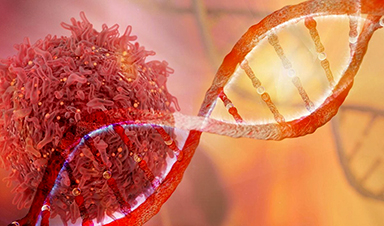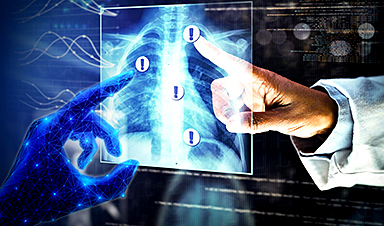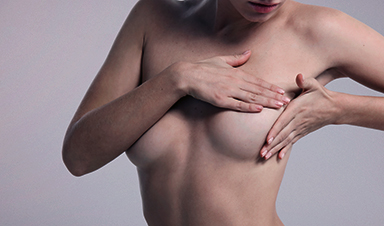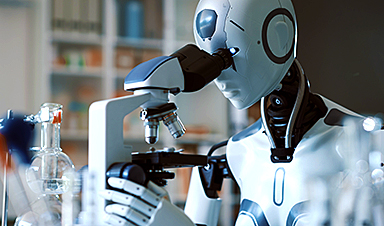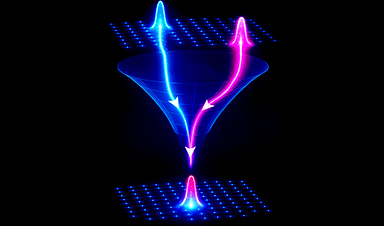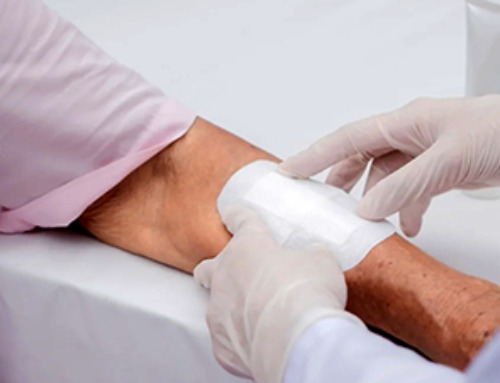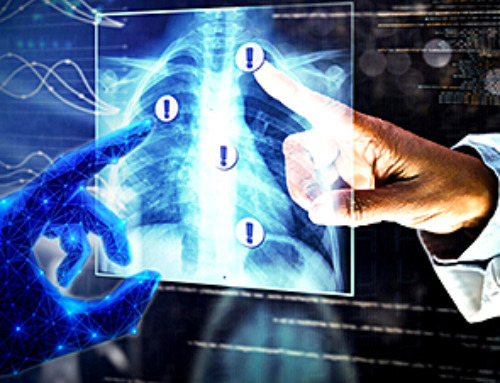In a recent study published in Cancer Discovery, researchers developed and validated a blood-based, cell-free deoxyribonucleic acid (cfDNA) fragmentome assay for lung cancer detection, which, if the results were positive, would be followed by low-dose computed tomography (LDCT).
Introduction
Lung cancer is a major death cause, and yearly screening is crucial. However, chest LDCT has low adoption due to patient barriers like inadequate awareness, radiation concerns, and limited availability.
Other challenges include poor smoking history recording, a lack of defined practices, and specialist follow-up.
A blood-based lung malignancy screening test, like the fragmentome technique, could increase screening rates by analyzing specific chromatin configurations in peripheral blood.
About the study
In the present DELFI-L101 study, researchers developed a hematological test using machine learning to analyze DNA fragmentomes and identify individuals at risk of lung cancer. Individuals testing positive would undergo LDCT.
Beginning March 2021, the researchers enrolled 958 individuals aged 50–80 with ≥20 pack-years of smoking across 47 United States (US) facilities. Eligibility features resembled the LDCT screening criteria of the 2015 National Health Interview Survey (NHIS).
They excluded individuals with cancer therapy within one year, a history of hematologic malignancy or myelodysplasia, organ tissue transplantation, blood product transfusion within 120 days of enrollment, pregnancy, and participation in other trials.
The team divided the study participants into three groups: A (lung cancer), B (non-cancer controls), and C (cancer other than lung cancer).
The American Joint Committee on Cancer’s Cancer Staging Manual (AJCC) criteria ascertained the disease stage. Changes in cfDNA fragmentation patterns (fragmentomes) in blood revealed genomic and chromatin features of lung cancer.
The researchers trained the classifier on 576 cases and controls before validating it on another 382 cases and controls.
They used whole genome sequences from the training dataset to assess fragmentations in 504 non-overlapping-type 5.0 MB sections with strong mappability. Each region included 80,000 pieces and covered a genome size of 2.50 GB.
The team examined genome-wide alterations to Hi-C open-type (A compartment) and closed-type (B compartment) chromatin.
They created the classifier using principal component analysis (PCA) and logistic regressions, incorporating chromosomal arm-level changes, cfDNA fractions derived from the mitochondrial genome, and cfDNA fragment length distributions.
The researchers performed Monte Carlo simulations on 15 million individuals under three scenarios:
- Base Scenario: Current practices without hematological screening.
- Low Scenario: 10% uptake of hematological screening for individuals eligible for pulmonary cancer screening but not subjected to low-dose CT in the first year, increasing to 25% in five years.
- High Scenario: 20% uptake of hematological screening for the same group in the first year, increasing to 50% in five years.
Results
The researchers observed 58% test specificity, 84% sensitivity, and 99.8% negative predictive value (NPV). Applying the rest to the screening-eligible group with 0.7% lung cancer prevalence, the number needed to screen (NNS) was 143.
Study validations showed negative and positive results related to NNS with LDCT imaging to detect 414 and 76 cases, respectively, yielding a 5.5 relative risk value. The positive predictive value (PPV) was almost double that of the LDCT qualifying requirements alone.
The cfDNA fragmentomes of lung squamous cell carcinoma (LUSC) patients comprised a component resembling cfDNA profiles from non-cancer individuals and another resembling A/B-type compartments noted in LUSC tissues.
Non-cancer individuals showed cfDNA patterns approximating lymphoblastoid Hi-C findings. Within common locations, fragmentations among samples provided by individuals with cancer presence and absence were similar.
Lung cancer patients had increased cell-free DNA representations fpr 1q, 3q, 5p, 8q, and 12p, as well as lower 1p, 3p, 4q, 5q, 10q, and 17p levels. Their cfDNA fragmentations differed from controls, revealing more closely packed chromatin in cfDNA of closed LUSC spaces, while lymphoblastoid reference regions showed the reverse impact.
At the cut-off of 0.2, ten-fold cross-validation with ten repeats within the training population yielded 50% overall specificity and sensitivities of 75%, 90%, 96%, and 97% for stages I, II, III, and IV, respectively. Sensitivity was constant across ages, with younger people having higher specificity. Using the 2015 NHIS data yielded 80% sensitivity and 58% specificity.
From the ‘base’ scenario (24,489 cases), lung cancer cases identified by screening increased to 63,523 (the ‘low’ scenario) and 100,346 (the ‘high’ scenario). In contrast, stage I cases increased by 4.80% and 9.70%, while stage IV diagnoses decreased by 4.20% and 8.70%, respectively.
In total, 4,720 deaths from lung malignancies could be averted in the ‘base’ scenario, 7,652 in the ‘low’ scenario, and 14,264 deaths in the ‘high’ scenario. LDCT use in screening could reduce the number of tests required to identify lung cancers from 202 (‘base’ scenario) to 150 (‘low’ scenario) and 139 (‘high’ scenario).
Conclusion
Based on the study findings, the DNA fragmentome assay provides a novel, accurate, affordable, blood-based tool for initial lung cancer evaluation with LDCT follow-ups.
The assay could contribute to preventing lung cancer-related deaths, with moderate adoption rates possibly lowering late-stage diagnoses and fatalities.
- Peter Mazzone et al., (2024) Clinical validation of a cell-free DNA fragmentome assay for augmentation of lung cancer early detection, Cancer Discov (2024), doi: https://doi.org/10.1158/2159-8290.CD-24-0519. https://aacrjournals.org/cancerdiscovery/article/doi/10.1158/2159-8290.CD-24-0519/745696/Clinical-validation-of-a-cell-free-DNA-fragmentome?searchresult=1
News
AI Is Overheating. This New Technology Could Be the Fix
Engineers have developed a passive evaporative cooling membrane that dramatically improves heat removal for electronics and data centers Engineers at the University of California San Diego have created an innovative cooling system designed to greatly enhance [...]
New nanomedicine wipes out leukemia in animal study
In a promising advance for cancer treatment, Northwestern University scientists have re-engineered the molecular structure of a common chemotherapy drug, making it dramatically more soluble and effective and less toxic. In the new study, [...]
Mystery Solved: Scientists Find Cause for Unexplained, Deadly Diseases
A study reveals that a protein called RPA is essential for maintaining chromosome stability by stimulating telomerase. New findings from the University of Wisconsin-Madison suggest that problems with a key protein that helps preserve chromosome stability [...]
Nanotech Blocks Infection and Speed Up Chronic Wound Recovery
A new nanotech-based formulation using quercetin and omega-3 fatty acids shows promise in halting bacterial biofilms and boosting skin cell repair. Scientists have developed a nanotechnology-based treatment to fight bacterial biofilms in wound infections. The [...]
Researchers propose five key questions for effective adoption of AI in clinical practice
While Artificial Intelligence (AI) can be a powerful tool that physicians can use to help diagnose their patients and has great potential to improve accuracy, efficiency and patient safety, it has its drawbacks. It [...]
Advancements and clinical translation of intelligent nanodrugs for breast cancer treatment
A comprehensive review in "Biofunct. Mater." meticulously details the most recent advancements and clinical translation of intelligent nanodrugs for breast cancer treatment. This paper presents an exhaustive overview of subtype-specific nanostrategies, the clinical benefits [...]
It’s Not “All in Your Head”: Scientists Develop Revolutionary Blood Test for Chronic Fatigue Syndrome
A 96% accurate blood test for ME/CFS could transform diagnosis and pave the way for future long COVID detection. Researchers from the University of East Anglia and Oxford Biodynamics have created a highly accurate [...]
How Far Can the Body Go? Scientists Find the Ultimate Limit of Human Endurance
Even the most elite endurance athletes can’t outrun biology. A new study finds that humans hit a metabolic ceiling at about 2.5 times their resting energy burn. When ultra-runners take on races that last [...]
World’s Rivers “Overdosing” on Human Antibiotics, Study Finds
Researchers estimate that approximately 8,500 tons of antibiotics enter river systems each year after passing through the human body and wastewater treatment processes. Rivers spanning millions of kilometers across the globe are contaminated with [...]
Yale Scientists Solve a Century-Old Brain Wave Mystery
Yale scientists traced gamma brain waves to thalamus-cortex interactions. The discovery could reveal how brain rhythms shape perception and disease. For more than a century, scientists have observed rhythmic waves of synchronized neuronal activity [...]
Can introducing peanuts early prevent allergies? Real-world data confirms it helps
New evidence from a large U.S. primary care network shows that early peanut introduction, endorsed in 2015 and 2017 guidelines, was followed by a marked decline in clinician-diagnosed peanut and overall food allergies among [...]
Nanoparticle blueprints reveal path to smarter medicines
Lipid nanoparticles (LNPs) are the delivery vehicles of modern medicine, carrying cancer drugs, gene therapies and vaccines into cells. Until recently, many scientists assumed that all LNPs followed more or less the same blueprint, [...]
How nanomedicine and AI are teaming up to tackle neurodegenerative diseases
When I first realized the scale of the challenge posed by neurodegenerative diseases, such as Alzheimer's, Parkinson's disease and amyotrophic lateral sclerosis (ALS), I felt simultaneously humbled and motivated. These disorders are not caused [...]
Self-Organizing Light Could Transform Computing and Communications
USC engineers have demonstrated a new kind of optical device that lets light organize its own route using the principles of thermodynamics. Instead of relying on switches or digital control, the light finds its own [...]
Groundbreaking New Way of Measuring Blood Pressure Could Save Thousands of Lives
A new method that improves the accuracy of interpreting blood pressure measurements taken at the ankle could be vital for individuals who are unable to have their blood pressure measured on the arm. A newly developed [...]
Scientist tackles key roadblock for AI in drug discovery
The drug development pipeline is a costly and lengthy process. Identifying high-quality "hit" compounds—those with high potency, selectivity, and favorable metabolic properties—at the earliest stages is important for reducing cost and accelerating the path [...]



